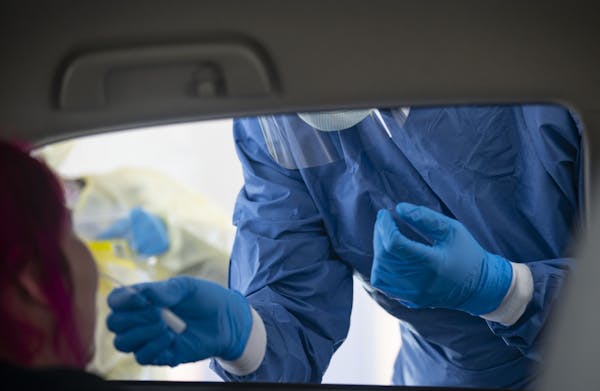Social distancing worked its way into the common vocabulary with the arrival of the highly contagious coronavirus, and with it the admonition for people to stay at least 6 feet away from others.
That can be nearly impossible in a vehicle.
The virus can be spread by droplets resulting from coughing or sneezing, or by aerosols released while talking or simply breathing. Outdoors, wind can dilute the viral particles. In an enclosed vehicle they have nowhere to go.
The Drive reader Mary wondered if she should be worried about catching or spreading the coronavirus when driving with family members or friends in her car, even if everybody feels fine.
"If the person is in their own car with their household contacts — and haven't loaned the car to anyone else to drive — driving together is not a problem," said Kris Ehresmann, infectious disease director at the Minnesota Department of Health. "That's no different from being at home with family members."
The Centers for Disease Control and Prevention agrees, but recommends limiting the number of people in a vehicle, even when they are from the same family or household. The agency suggests having only one or two family members who are not high risks to contract the illness in the vehicle at the same time, in addition to the driver.
People from different households should not ride in the same car, Ehresmann said, a sentiment echoed by the CDC. But if they must, there are ways to minimize the risk of getting or transmitting COVID-19.
Three researchers from Harvard's T.H. Chan School of Public Health say that opening the windows, even just a crack, can help dilute the concentration of droplets and aerosols in a car. That brings fresh air into the vehicle.
"Having everyone in the car wear a mask can also help and is a must in a taxi or ride-share vehicle," Harvard researchers Joseph Allen and Jack Spengler and Richard Corsi from Portland State University wrote in an opinion piece that appeared in USA Today this spring.
On rainy days or when it's hot or cold and drivers prefer to keep the windows closed, the CDC says to be sure the air conditioner or air ventilation system is not in recirculating air mode. "The virus is not going to come through vents from another car," Ehresmann said.
Those measures address airborne transmissions, but there also are many high contact surfaces inside an airtight car for droplets to land on. To reduce risk, the CDC recommends regularly cleaning and disinfecting often-touched objects such as radio dials, temperature controls, seat belts, the gear shift and steering wheel.
Drive Smart campaign continues
Though it's been under the radar, the Drive Smart campaign by the Minnesota Department of Public Safety (DPS) to curb dangerous driving behaviors is continuing. The effort started June 1 and will run through June 14.
With traffic levels down because of the COVID-19 pandemic, law enforcement officials have reported an uptick in speeding and the number of crashes resulting in serious injuries or death, said Mike Hanson, director of the DPS Office of Traffic Safety.
The goal of Drive Smart is to have motorists make smart choices to "make the roads safer for everybody," Hanson said. It's also a reminder for drivers to put down their phones while behind the wheel, he said.
Follow news about traffic and commuting at The Drive on startribune.com. Got traffic or transportation questions, or story ideas? E-mail drive@startribune.com, tweet @stribdrive or call Tim Harlow at 612-673-7768.
Carolyn Parnell, 'trailblazer' who served as Minnesota's first IT commissioner, dies


